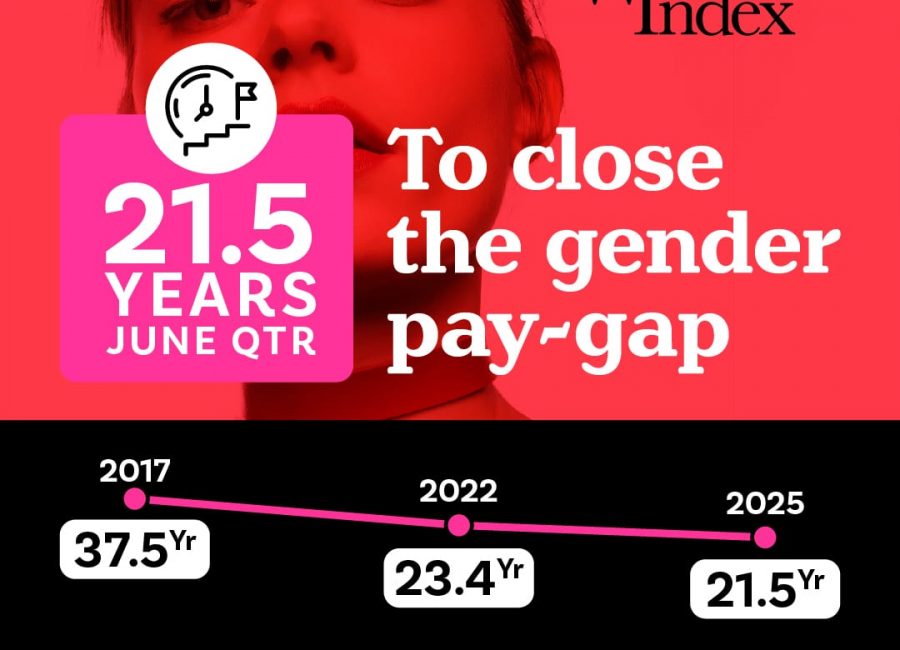The Australian Government’s gender equality strategy is on the whole a fantastic achievement that’s set to put a further rocket up large companies to progress or else. But there was one obvious omission – where was the national timeframe target for ultimate gender equality sucess?
Released ahead of International Women’s Day 2024 by Senator Katy Gallagher, the Working for Women: A Strategy for Gender Equality set a path and vision over the next 10 years, with a focus on five priority areas:
- gender-based violence
- unpaid and paid care
- economic equality and security
- health
- leadership, representation and decision-making.
Without doubt, the Albanese Government deserves praise for doing what no government could before it – listen and deliver!
The big hit!
The standout announcement, and there were many, included a promise by Senator Gallagher that the government was looking to come down harder on non-WGEA compliant companies by excluding them from government contracts.
“We’ll use the Workplace Gender Equality reporting framework to make it a rule that, in order to win government work, businesses with 500 or more employees must commit to targets to improve gender equality in their workplaces,” noted the Senator in a National Press Club address.”
As it stands 7% of companies with over 100 employees are considered non-compliant and not eligible for government contracts because they don’t already report to the Workplace Gender Equality Agency (WGEA).
But this new ruling will require companies to go a step further than simply not reporting, they will require the reporting businesses to set their own targets for progress.
“These targets will focus on the gender makeup of their boards and the workforce; equal pay; flexible working arrangements; workplace consultation on gender equality; and efforts to prevent and address sexual harassment.
“Not only will businesses have to set targets, but they will also have to show progress towards them.”
So what’s ahead for large companies.
Financy understands that under the plan, companies will have to commit to and achieve workplace targets against at least three gender equality indicators, which include the gender composition of boards and the workforce, equal remuneration, flexibility, workplace consultation on gender equality and efforts to prevent and address sexual harassment.
The move puts an even greater compliance burden on Australian companies to measure and track their performance before reporting results to the Workplace Gender Equality Agency for review.
The big miss
The one thing we would have liked to have seen was the setting of a targetted timeframe, similar to the Paris Agreement on Climate Change, for achieving Gender Equality in Australia.
A committment to achieving gender equality in this country by 2050 would be realistic on most metrics given that the Financy Women’s Index anticipates workplace gender equality being achieved in 27.5 years.
As it stands, the success of the government’s strategy hinges on robust implementation mechanisms and sustained commitment from all stakeholders.
Merely articulating aspirations without corresponding actions would risk relegating gender equality to the realm of rhetoric rather than tangible progress. We don’t want that.
So, it is imperative for the government to allocate adequate resources, monitor progress rigorously, and recalibrate strategies as necessary to ensure the realization of its vision.
More of the standout new inititaives
Gender based violence – the Government will:
- fully implement the recommendations from the Respect@Work report, and recommendations from Set the Standard: Report on the Independent Review into Commonwealth Parliamentary Workplaces
- provide access to financial and other support to people experiencing family and domestic violence, to reduce financial insecurity when leaving a violent intimate partner relationship
- take action to improve the experiences of victim-survivors of sexual violence in the justice system. This includes progressing reforms under the Standing Council of Attorneys‑General’s Work Plan to Strengthen Criminal Justice Responses to Sexual Assault 2022–27 and through establishing and responding to an Australian Law Reform Commission inquiry into justice responses to sexual violence
- address online child sexual abuse material and children’s access to pornography through the eSafety Commissioner, supported by consent and respectful relationships programs
- increase safety in higher education, including through the Australian Universities Accord and through the Action Plan to Address Gender-based Violence in Higher Education, to recognise the leading role the higher education sector can and should play to prevent and respond to gender-based violence.
Unpaid and paid care – the Government will continue to:
- fund programs to build the confidence and engagement of men as caregivers.
To further accelerate progress, directions for future effort include:
- evaluating the operation of the expanded Paid Parental Leave Scheme, including men’s uptake of paid parental leave, and working with employers to expand employer provided paid parental leave and improve uptake
- exploring how social security settings (along with tax) can more comprehensively recognise the economic participation of those performing unpaid care
- responding to Productivity Commission and ACCC inquiries into early childhood education and care, to make it more affordable and accessible
- taking action to attract and retain workers, including men, in the care and support economy.
Economic Equality and security – the Government will continue to:
- take further action to address gender segregation of industries and occupations, including through responding to recommendations of the Pathway to Diversity in STEM Review and improving the diversity of the cyber security workforce through the Cyber Security Strategy
- end the ParentsNext program and implement a replacement program that genuinely responds to the needs of parents of young children and supports them to prepare for or return to work, while prioritising their caring roles
- implement recommendations of the Workplace Gender Equality Act Review to drive action across the private sector on gender equality and collect data to understand how employees experience multiple and intersecting forms of bias, discrimination and disadvantage at work
- scope a First Nations Economic Partnership with the Coalition of the Peaks and other organisations, to boost labour force participation and economic outcomes – including for First Nations women
- improve the economic outcomes and safety of migrant women through system reform outlined in the Migration Strategy
- support women’s access to housing through the development of the National Housing and Homelessness Plan, building on delivery of the Social Housing Accelerator and the establishment of the Housing Australia Future Fund, which also includes targeted support for women and children
- consider longer term improvements to the child support scheme, looking at issues like noncompliance as a means of financial abuse, whether the child support formula reflects the current costs of raising children in Australia, and what can be done to support parents where private collect arrangements have broken down.
Health – the Government will continue to:
- implement Australia’s Disability Strategy 2021–2031 to improve health and mental health outcomes for people with disability
- consider gender impacts in any future reforms to Australian Government health funding through Medicare and state and territory agreements under the National Health Reform Agreement so health systems can cover health needs equitably
- consider reforms to make access to sexual and reproductive health care easier
- develop a strategy to improve health outcomes for LGBTIQA+ people.
To further accelerate progress, directions for future effort include:
- improving culturally responsive health services and support for culturally and linguistically diverse women
- partnerships with Aboriginal and Torres Strait Islander peoples to develop and implement strategies, programs and initiatives to improve health and wellbeing that work towards the Closing the Gap Priority Reforms and socio-economic outcomes and targets 1, 2 and 14.
Leadership, representation and decision-making – the Government will continue to:
- set targets for gender representation on Australian Government boards to drive gender balance in chair positions and at the individual board level
- develop a new international gender equality strategy, recognising gender equality as central to Australia’s foreign policy, international development, humanitarian, trade and security efforts.
- To further accelerate progress, directions for future effort include:
- further work with the private sector to share good practice and learn what works, and encourage companies to boost representation on private boards and in executive positions
- working across all levels of government to identify opportunities to deliver on the priority reforms under Closing the Gap and ensuring First Nations women can be front and centre of driving change and gender equality
- ensuring gender is considered and women can lead action on climate change and are represented in disaster and crisis mitigation, preparedness, response and recovery efforts, including in leadership and advisory positions
- exploring options to improve the representation in media and advertising of the diversity of women and gender roles more broadly, including through improved media literacy.
Financy covers gender finance, diversity, inclusion and ESG issues. We advocate for gender equity change through the Women’s Index report and help businesses take action on DEI through tech solutions like IMPACTER.












